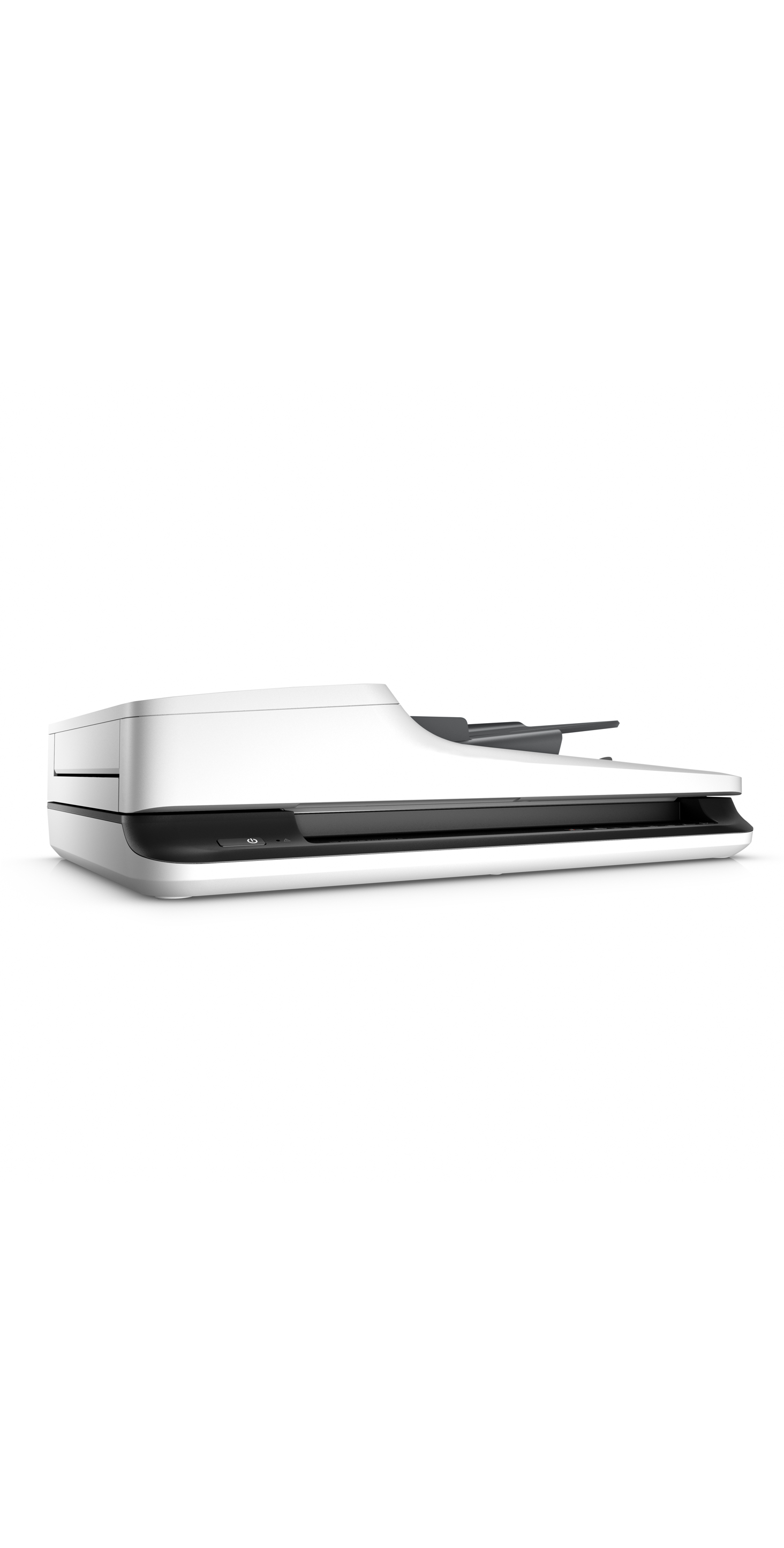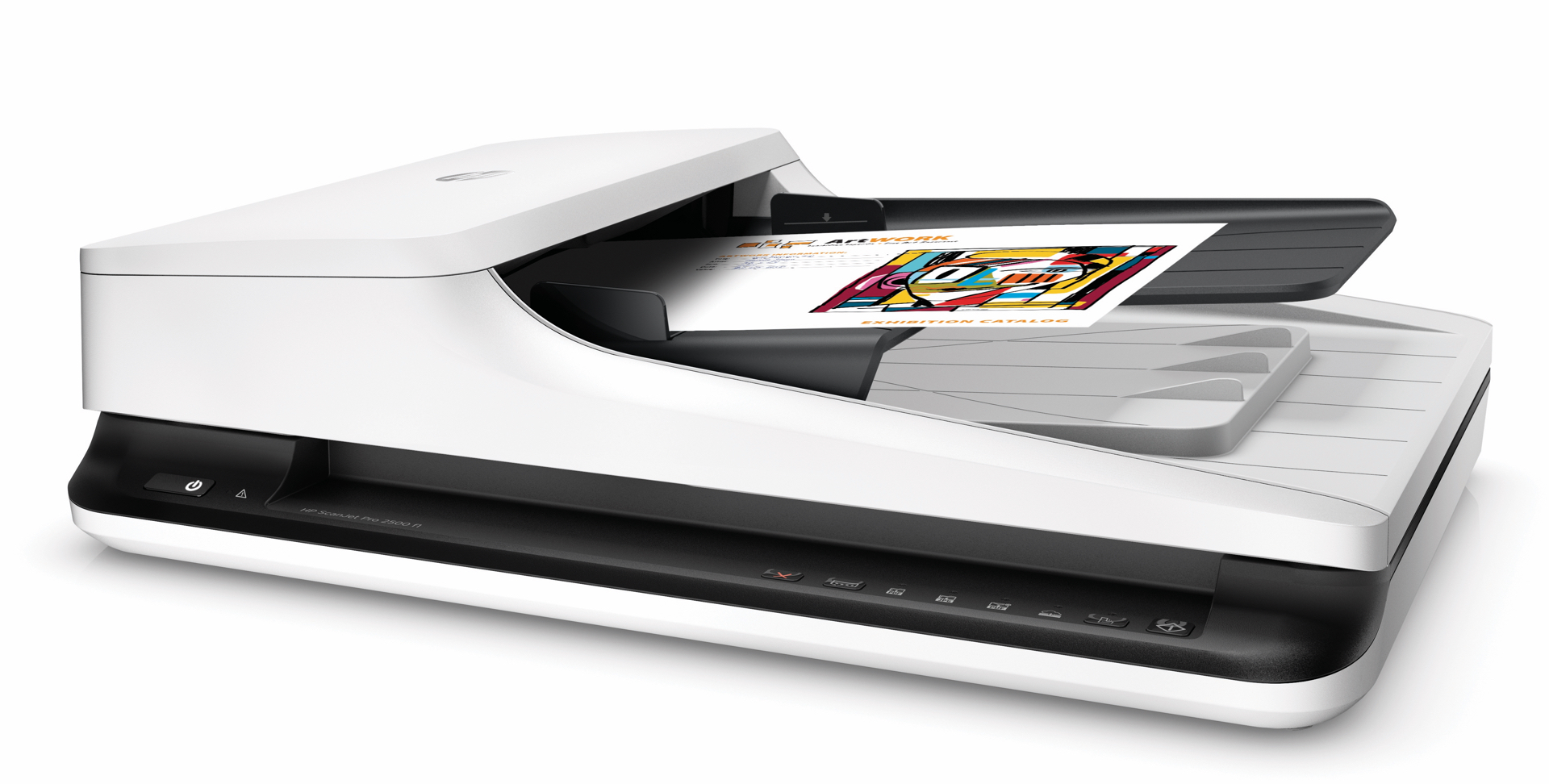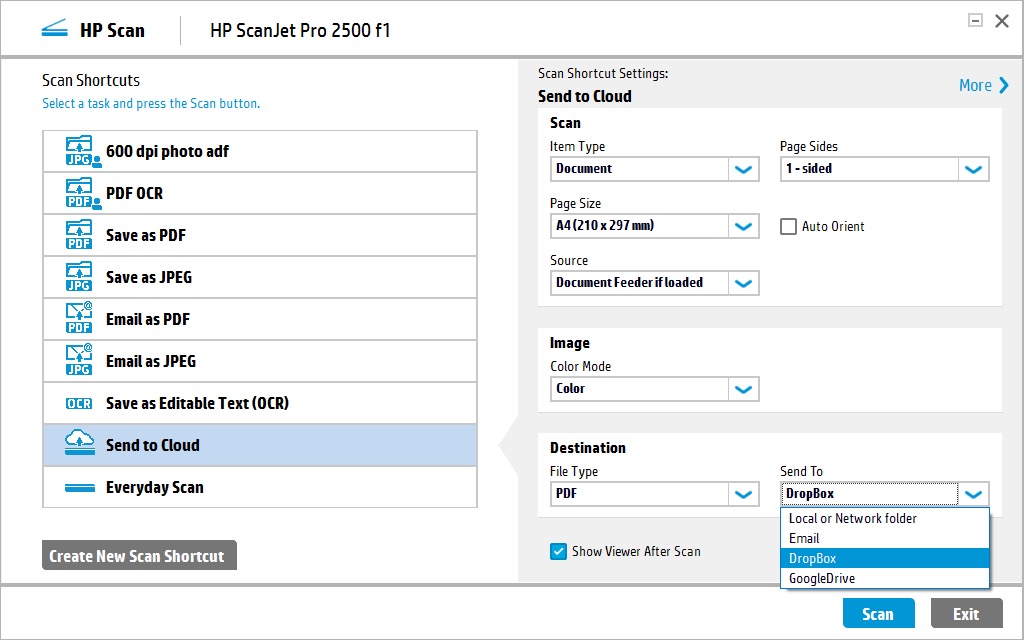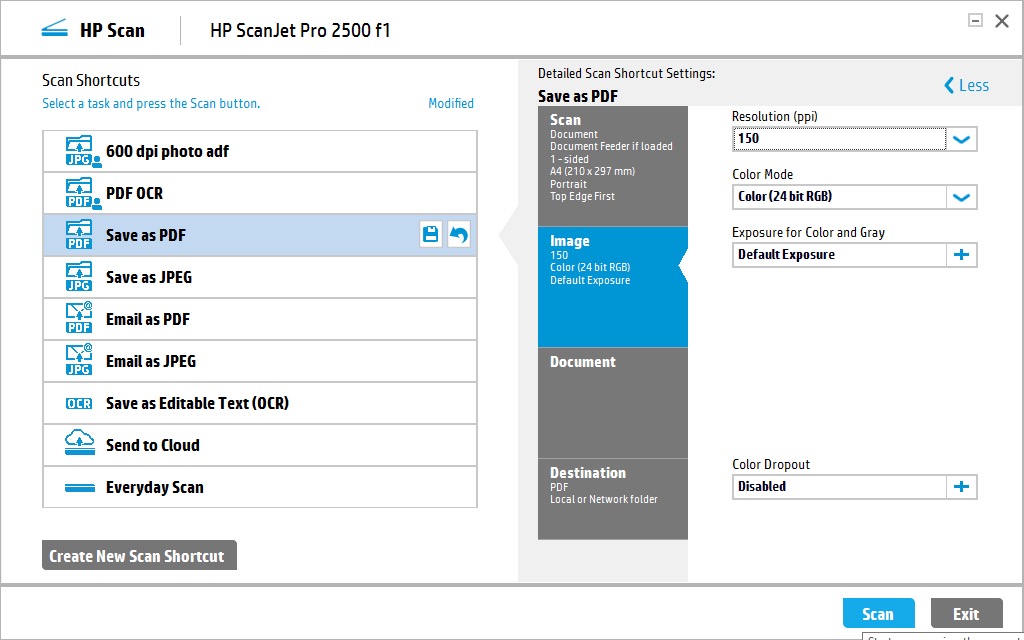HP ScanJet Pro 2500 f1 review
Not as glamorous as the other more famous F1, but this scanner still races ahead


A good desktop document scanner
-
+
Fast, good quality scanning; Flexible media handling
-
-
Basic software bundle

There's no shortage of desktop document scanners around, but the vast majority are sheet-fed only, which isn't much help if you need to capture unusually shaped or sized media. Another common limitation of most document scanners is a 600-dots-per-inch (dpi) maximum resolution, which is plenty for typical office jobs, but may not be enough to get the best capture of a photograph or other detailed original.
HP's ScanJet Pro 2500 f1 is a neat flatbed scanner with an automatic document feeder (ADF) built into the lid. It's a squat device, looking much like the top section of a small office multifunction peripheral. On the front panel are a collection of customisable shortcut buttons covering the most common scan-to-PDF and scan-to-image functions, while the back has ports for power and a USB connection - there's no network capability.
Although it undercuts some of our favourite desktop scanners on price, the ScanJet Pro 2500 f1 doesn't compare too badly on specifications. It's rated for 20 pages per minute (ppm) at 300dpi, and with dual sensors it's able to capture both sides of an original in one pass, for a potential output of up to 40 images per minute (ipm).

Design and software
The scanner's lid and ADF section is mounted on strong hinges, stiff enough to prevent it crashing down onto the platen glass. These telescope upwards by a couple of centimetres, allowing the lid to close flat on thick originals such as a magazine or book. While the 50-page ADF doesn't seem quite as bullet-proof as we'd like, it's up to the job on a scanner rated at a maximum 1,500 pages per day. Pulling up at the right-hand edge of the top mechanism releases a large section of the cover, which ought to make retrieval simple in the case of a paper jam.
HP has designed the ScanJet Pro 2500 f1 with no lip at the front edge of the platen, so you don't have to risk snagging the edges of original documents as you fumble to retrieve them from the scanner. Unfortunately, the bezel at the other three sides isn't quite flush with the glass, and we found it was possible to tuck the corner of a photograph under the plastic if we weren't careful when positioning it.
Devices at this price rarely come with advanced scan management software, but even so this is probably this scanner's weakest area. HP ships the ScanJet Pro 2500 f1 with TWAIN drivers and a tweaked version of its regular scan software. It can handle formats including JPEG and searchable PDF and can scan to destinations such as files, email and the cloud. Options for the latter are limited: while there's DropBox and Google Drive, Evernote and SharePoint are absent. Automatic page orientation is also missing, and users will need to configure blank page detection manually. The scan interface itself is an improvement on the inflexible and over-simplified version that HP's consumer products get, at least.

Cloud options are comparatively limited - there's no SharePoint or Evernote support
In use
Anyone used to the hushed mechanism of higher-end document scanners is in for a shock when they first power up the ScanJet Pro 2500 f1. While the scan head itself sounds smooth, you can hear the friction as paper passes through the ADF - the paper mechanism is lined only in plastic. We wouldn't necessarily expect better at this price, but the U-shape path means that the paper guides do more work, generating more noise, than in a device with a J-shape paper path. This could also prove an issue if you need to scan stacks of thicker or smaller than usual media. Although 6x4in photos weren't bent after passing through the ADF, it could only feed them reliably if we loaded them with a portrait orientation.
Whether scanning from the platen or ADF, speeds are competitive. This was especially true at low resolutions: we captured an A4 page at 150dpi in just six seconds, and over 50 single-sided pages we measured 18.1ppm including the time taken to save out the result. HP's software was slow to process more complicated jobs that included OCR: our 10-page, 16-side torture test took two minutes and 47 seconds in total at 200dpi.

The detailed settings are neatly laid out
With the auto-exposure feature disabled by default, both document and photo scans were a touch dark with a cool colour bias. With it enabled, we were more than happy with all of our results. Even when using the ADF, photos were unusually sharp for this class of device, and 1,200dpi scans from the platen were especially sharp.
Conclusions
The ScanJet Pro 2500 f1 is cheap for a desktop document scanner, but perhaps the only area where this shows is in its basic software. While neither fast nor robust enough to cope with multiple users or high volumes, its platen and ADF give it welcome flexibility for a single user facing a range of tasks in a small office. It's a niche product, perhaps, but it could prove ideal where there's not the space or need for an MFP or faster, higher volume document scanner.
Verdict
A good desktop document scanner
| Scan capability: | 1,200dpi, 24-bit colour, single-pass duplex |
| Features: | De-skew and blank-page detection. Hole fill. |
| Speed: | 20ppm/40ipm at 300dpi |
| Duty: | 1,500 pages per day (maximum) |
| Paper handling: | 50-sheet motorised feed, maximum A4 page size, 105gsm paper (ADF) |
| Interfaces: | USB |
| Supported operating systems: | Windows 7 or later, OS X 10.9 or later |
| Power consumption: | Sleep 0W, Standby 2W, Active 14W |
| Size: | 122x451x351mm (WDH) |
| Weight: | 4.3kg |
| Row 10 - Cell 0 | Row 10 - Cell 1 |
| [Benchmarks] | Row 11 - Cell 1 |
| A4 page, 150dpi: | 6s (one page), 1m 24s (24 pages), 2m 46s (50 pages), 18.1ipm |
| A4 page, 300dpi: | 12s (one page), 1m 43s (24 pages), 3m 26s (50 pages) 14.6ipm |
| 6x4in photo, 600dpi: | 18s (one page), 1m 32s (10 pages) 6.5ppm |
Get the ITPro daily newsletter
Sign up today and you will receive a free copy of our Future Focus 2025 report - the leading guidance on AI, cybersecurity and other IT challenges as per 700+ senior executives
After a brief career in corporate IT, Simon Handby combined his love of technology and writing when he made the move to Computer Shopper magazine. As a technology reviewer he's since tested everything from routers and switches, to smart air fryers and doorbells, and covered technology such as EVs, TVs, solar power and the singularity.
During more than 15 years as Shopper's long-time printer reviewer, Simon tried, tested and wrote up literally hundreds of home, small office and workgroup printers. He continues reviewing smart products and printers for a variety of publications, and has been an IT Pro contributor since 2010. Simon is almost never happier than when surrounded by printers and paper, applying his stopwatch and a seasoned eye to find the best performing, best value products for business users.
-
 ‘Phishing kits are a force multiplier': Cheap cyber crime kits can be bought on the dark web for less than $25 – and experts warn it’s lowering the barrier of entry for amateur hackers
‘Phishing kits are a force multiplier': Cheap cyber crime kits can be bought on the dark web for less than $25 – and experts warn it’s lowering the barrier of entry for amateur hackersNews Research from NordVPN shows phishing kits are now widely available on the dark web and via messaging apps like Telegram, and are often selling for less than $25.
By Emma Woollacott Published
-
 Redis unveils new tools for developers working on AI applications
Redis unveils new tools for developers working on AI applicationsNews Redis has announced new tools aimed at making it easier for AI developers to build applications and optimize large language model (LLM) outputs.
By Ross Kelly Published
-
 Google layoffs continue with "hundreds" cut from Chrome, Android, and Pixel teams
Google layoffs continue with "hundreds" cut from Chrome, Android, and Pixel teamsNews The tech giant's efficiency drive enters a third year with devices teams the latest target
By Bobby Hellard Published